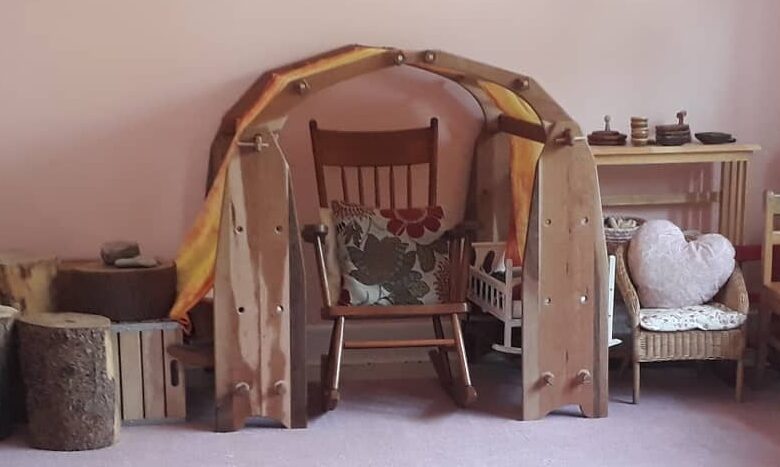
Early Years in a Waldorf School
A Waldorf School follows a methodology that values imagination in the learning process and takes a holistic approach to student development. Waldorf education emphasizes not only intellectual growth but also aesthetic and practical abilities. It is crucial to understand that Waldorf Schools and Montessori Schools are not the same, as each has its approach to learning and development.
Here are some basic practices that you will find in an early years Waldorf education setting (daycare/kindergarten/pre-school):
Limited Sensory Experience: Modern world is overwhelmed with different sensory experiences. Children in Waldorf school are given minimum exposure to different sensory experiences to limit overstimulation of their senses. A limited sensory exposure ensures their healthy physical, mental, social, and spiritual growth. This includes overly decorated classrooms with bright colors. In Waldorf kindergartens, the classroom has walls painted in light pastel colors, and all the toys and supporting materials are preferred to be in natural tones.
Rhythm and Repetition: Rhythm and repetition in daily, monthly, and yearly activities within the class and the school provide the sense of security that a child needs at that stage of development. For example, for one week a kindergarten teacher will focus on just one sound. If the week is on the sound ‘O’ then they will sing rhymes that have the sound ‘O’, eat Oranges, make drawings that have circles, and play games that involve students moving in circles.
Self Initiated Free Play: The school does not make any conscious effort to work on the intellectual growth of the children till age seven. The focus is on engaging them physically. If it is a time for an activity, then they are given extended time for self-initiated free play with minimum guidance from the teacher. Free Play involves ‘unfinished’ play items directly from nature like sticks, rocks, cones, clay or made from nature like wooden toys, dolls, and toys made from fabric, cotton, or wool.
Imitation: In the early years, children have an innate ability to imitate. Hence, rather than giving direct instructions, the teachers model the tasks and the behaviors that they expect the children to adopt or follow. The teacher will start cleaning the room and encourage children to join her rather than requesting them to start cleaning while she observes them and give instructions.
Artistic Activities: The children are engaged in artistic and domestic activities through songs, poems, and stories to give a feeling of love and hope. This approach helps them understand the world as a coherent and safe place. Fairytales, especially local ones, can be a great way to do this in which evil is defeated by good and justice.
Self-Development: The adults working with children should be on a path of self-development. They should be able and willing to self-reflect on their inner attitudes and respect the child’s life journey for their growth. One method to achieve this can be writing a reflective diary regularly about their work with children and colleagues.
Although these qualities should be in Waldorf kindergartens, there is no harm in looking for these practices in any early years education setting for your child.
Photo credits: Waldorf School Detroit, Farwa Tassaduq




Leave a Reply